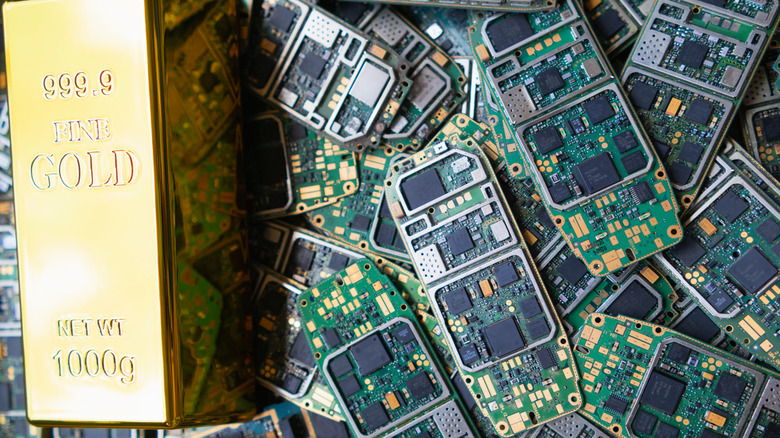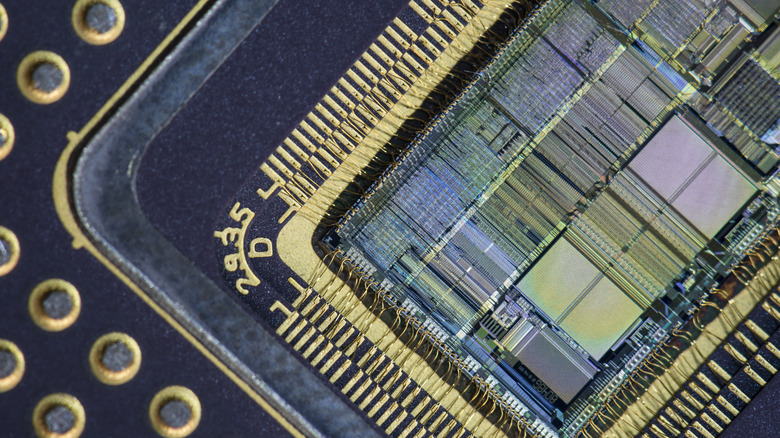How Much Gold Is Actually In Your Smartphone?
You are near precious metals and materials more often than you realize. Although we are on the cusp of new rare-earth-free magnets and materials discovered by AI, most manufacturing processes still use highly sought-after and rare metals. Some are essential to the inner workings of electronics, like contributing to the conductivity of components or offering heat dissipation properties to keep gadgets cool. Imagine what's lingering inside the tablets and smartphones you use every day. That's how it is for gold. Yes, actual gold. It offers some fairly advanced properties like high electrical conductivity, corrosion resistance, and strong bonding to merge or link wires and other components. Of course, it's not the only valuable material inside your phone. If you opened up your device, you'd also find copper, cobalt, aluminum, lithium, silver, and more. But how much gold is actually in your smartphone?
On average, smartphones have about 0.034 grams of gold inside. In a single phone, that doesn't seem like a lot, but when you think about how many millions of devices are produced each year from the major manufacturers, it adds up. Smartphones aren't the only electronic devices that contain gold. You can also find gold inside computers, some older TVs, radios, retro game consoles, coffee makers, small appliances, and beyond. The circuit board, or motherboard, is one of the most prominent components to feature gold inside these devices. They're often coated with a thin layer of gold, or the built-in circuitry is laid with gold or silver to facilitate communication between components. Some bigger devices can have as much as 1 gram of gold per unit, particularly large server motherboards that rely on the metal for circuitry.
What else is gold used for inside a device or smartphone?
The fine gold and silver circuits on a motherboard are used to connect the components, electrically and digitally, for communication. But there are other components inside modern devices that contain gold, like, for example, the connectors on SIM cards. Moreover, various ports, connectors, and contacts are also gold or gold-plated to ensure reliable connections. Those particular elements can be found in batteries, speakers, cameras, processors, and smaller components. Besides the connectivity, gold is used because it's non-corrosive. As these elements are inside a device for a long time, usually sealed up completely, there's no worry about rusting or corrosion, which could damage the other components and cause a breakdown in electrical flow and communications.
The valuable metals inside your phone — including gold — are one reason why it's recommended to recycle your old devices. According to gold experts, it takes about 41 smartphones to recover just a single gram of gold. That goes for all electronics. Sure, you can repurpose your old-school PC towers into things like shelves or hidden storage, but the components inside, like the motherboard, should always be recycled. Recycling tech contributes to the available supply of materials. That said, now that scientists know how to turn lead into gold with alchemy, maybe there's hope for a greater, possibly unending supply? Sadly, it turns out that in this instance, it goes back to lead eventually. Keep recycling, folks.

